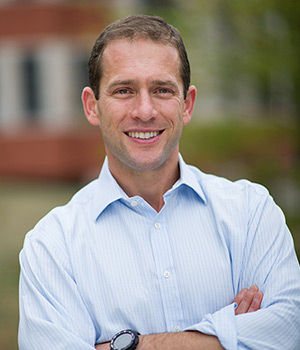Open Facebook or Twitter on any given day during the Covid-19 global pandemic, and it takes just moments before a questionable claim about the coronavirus appears — 5G technology causes people to succumb to the virus; inhaling steam will cure it; the virus is a bioweapon gone wrong. From the origins of the virus or potential treatments to what the U.S. federal government is or is not doing in response, misinformation abounds.
 Last month, Jacob N. Shapiro, co-director of Princeton University’s Empirical Studies of Conflict Project (ESOC), asked ESOC research specialist Jan Oledan to look at misinformation narratives concerning the coronavirus. Since then, the effort has grown into a full-fledged research project and collaboration between ESOC and Microsoft Research.
Last month, Jacob N. Shapiro, co-director of Princeton University’s Empirical Studies of Conflict Project (ESOC), asked ESOC research specialist Jan Oledan to look at misinformation narratives concerning the coronavirus. Since then, the effort has grown into a full-fledged research project and collaboration between ESOC and Microsoft Research.
“Our ultimate goal is to contribute ground truth on narratives so that researchers can develop better knowledge about who shares misinformation and its impact. This also will help industry partners like Microsoft develop better tools to prevent their systems from spreading it,” said Shapiro, professor of politics and international affairs at Princeton’s Woodrow Wilson School of Public and International Affairs.
Shapiro hopes the data can inform work by social media platforms and search engines, which may inadvertently facilitate misinformation campaigns, and help journalists understand and track misinformation narratives.
At the root of the effort are 16 undergraduate and graduate students from Princeton, Bocconi University, The University of Chicago, and Columbia University, eager to step up and contribute after their semesters were disrupted by the pandemic. Each has a specific assignment (by country) to monitor, collect, input, and code misinformation content from news outlets and platforms such as Twitter, Facebook, WhatsApp, and Weibo — a popular social media platform in China. Oledan manages the research team and maintains the ongoing database where they log stories collected from across the globe.

“Being stuck at home, I felt helpless. I thought this project would be a meaningful way for me to make a positive contribution. I also was really curious about the kinds of narratives that get spread on social media,” said Fumika Mizuno ’21, who is majoring in Politics. “I'm looking at stories that circulate in Japan. The people involved in this project are spread all over the globe. It's a reminder that in this age, there are few places that are immune to disinformation.” Covid-19 has derailed Mizuno’s plans to attend the Tokyo Olympics to conduct senior thesis research, but, as a result of working on this effort, she now is contemplating a comparative study of different Asian states’ government communication campaigns in response to the pandemic.
“We wanted to give students a way they could feel engaged and make a contribution to addressing this problem. This project gives them a sense of agency during a global crisis,” said Shapiro. “They’re also learning the practice of taking a confusing, messy reality and trying to refine it down to a set of coherent, consistently applied concepts. That skill is useful in so many areas of life.”
ESOC’s efforts on tracking misinformation narratives take a different approach to policy impact from the traditional method of publishing papers, which others translate into practical application. The team is providing data and findings as the research is happening to Microsoft Research and other signatories to the joint industry statement on Covid-19 disinformation. The work conducted by Oledan and a few of the research assistants early on, during the week of March 16, fed directly into development efforts for real-world systems to shut down misinformation sharing, said Shapiro.
In addition to Covid-19, ESOC also conducts research tracking trends in online foreign influence efforts (FIEs), including but not limited to Russian interference in the 2016 U.S. presidential election. The team’s 2019 report described a database of 53 such FIEs targeting 24 different countries from 2013 through 2018. The Mueller Report and efforts by industry and academics, including ESOC, have confirmed that many of the campaigns in 2016 and afterward in Europe were malicious attempts by Russia and other state actors to sow discord in Western democracies.
While it is too early to report definitive trends from the Covid-19 narrative tracking project, Shapiro and Oledan have made a few observations from the data collected to date. Although there is a clear upward trend in the number of disinformation narratives as the disease itself has spread, political disinformation has been fairly steady from late February on — it’s not increasing as fast as the narratives generally are increasing, they said.
“Almost all of the misinformation coming from state actors is about laying a political groundwork, setting a narrative that is going to be favorable to them once the virus is contained. Fortunately, state actors are not out there in big numbers promoting misinformation to interfere with the emergency response or talking about false cures, preventative measures, or diagnostic procedures,” Shapiro said.
To hear more from four of the Princeton University undergraduates working on this project, including Fumika Mizuno ’21, Politics; Anne Wen ’22, Woodrow Wilson School; Kamya Yadav ’21, Politics; and Audrey Yan ’22, Civil Engineering; visit this photo gallery.

